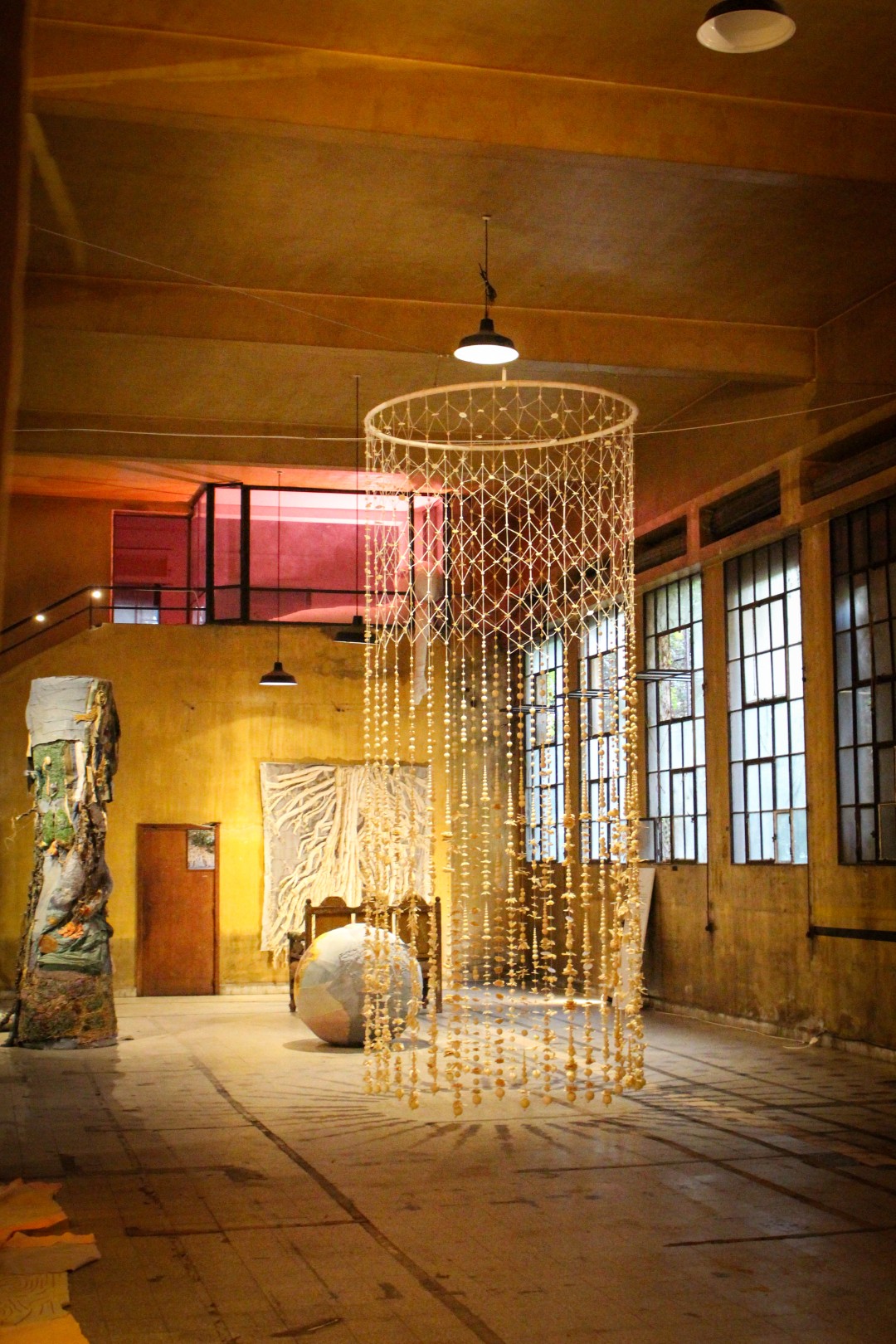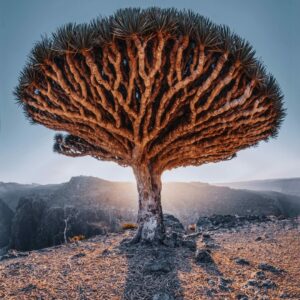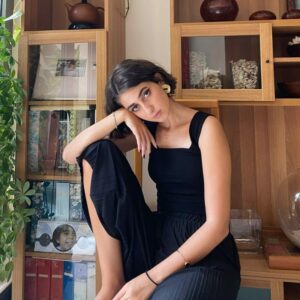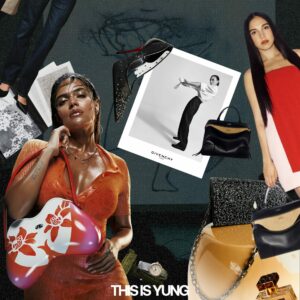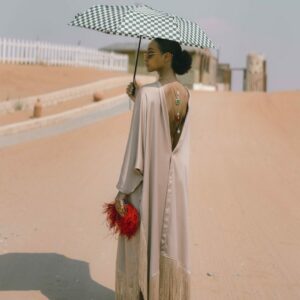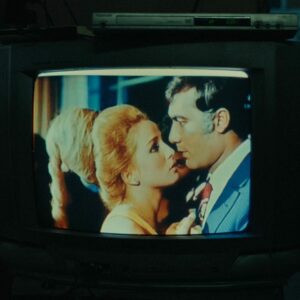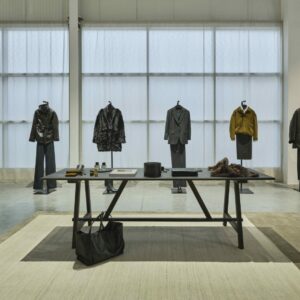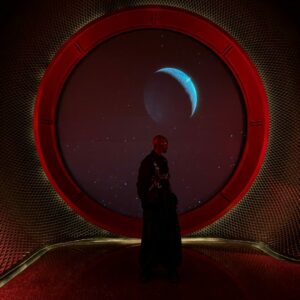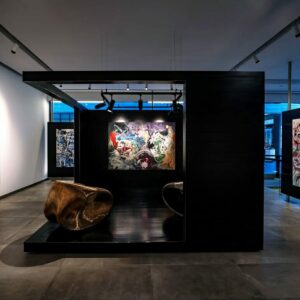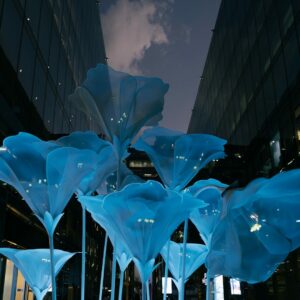At We Design Beirut 2025, the city became a living gallery, its landmarks transformed into spaces of reflection, revival, and storytelling. Across countless installations and interventions, every artist seemed to echo Beirut’s pulse: stories of memory, resilience, and renewal unfolding through stone, fabric, glass, and light.
There were as many artworks as there were voices to listen to, each revealing a personal dialogue between place and imagination. Amid this abundance, we took the chance to step inside the minds of a number of designers and artists whose creative processes open windows into how ideas are born, shaped, and ultimately shared and who represent just a fraction of the talents on show.
From Nada Debs’ reinterpretation of the Roman Baths in Of Water and Stone, to Christian Pellizzari’s luminous installation at Immeuble de l’Union, and Amer Al Koudsi’s poetic play with material and form, each reminded us that design in Beirut is never static, it’s alive, layered, and deeply human.
Textured Love — دار دوّار، خيط وخبار
By Ahmed Amer, part of “Threads of Life” at We Design Beirut, Abroyan Factory
In the heart of Abroyan Factory, where textile machines once hummed with life, a new rhythm emerged through Textured Love, دار دوّار، خيط وخبار, a large-scale mural by Beirut-based designer and illustrator Ahmed Amer. Made from layered deadstock fabrics dyed, patched, and embroidered with Levantine and Aghabani motifs, the installation was both an act of revival and a declaration of love, for heritage, community, and the enduring spirit of craft.
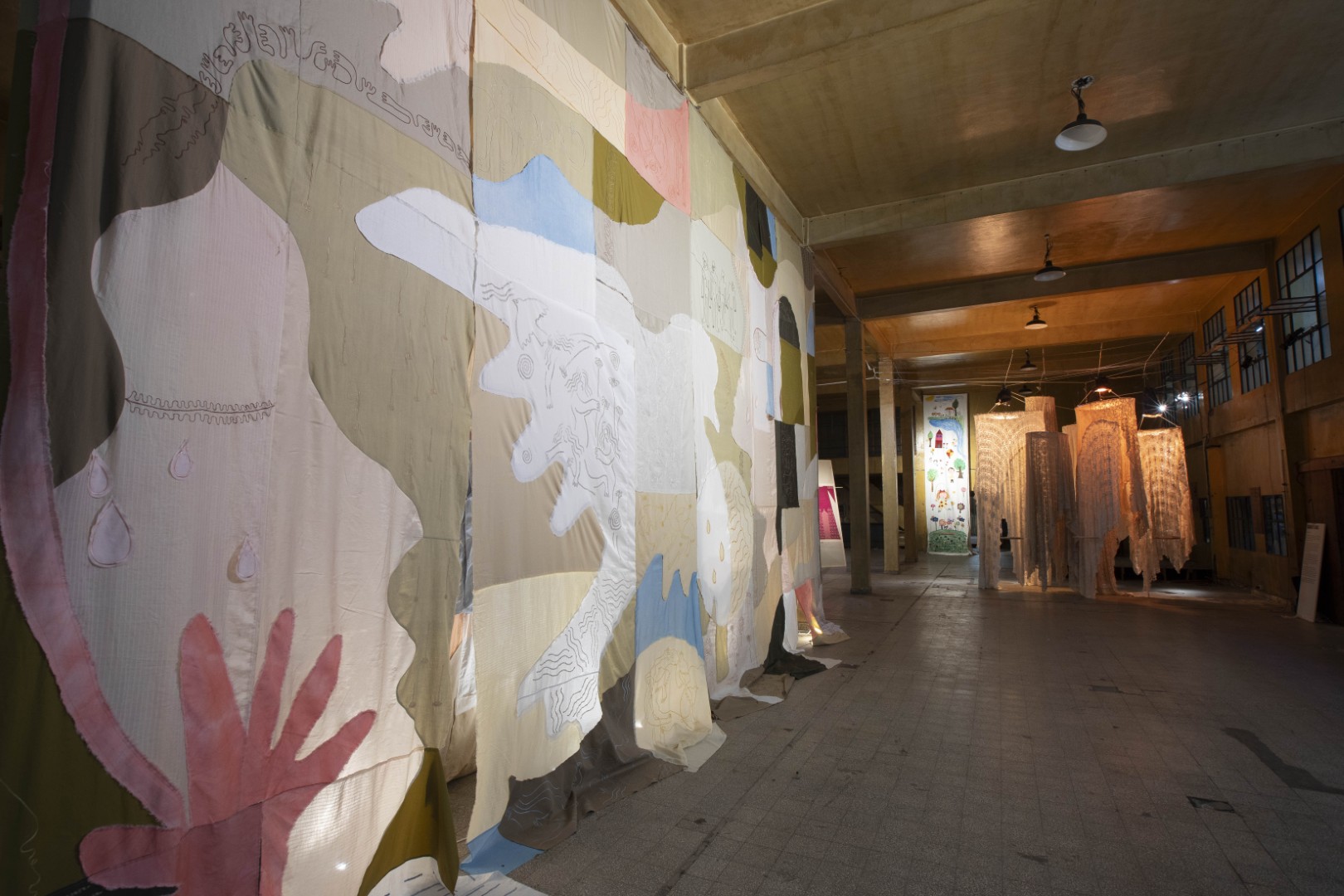
Each fabric fragment carried a story. Dyed and reworked by hand, these discarded materials were reborn into textured panels that pulse with colour and emotion. The fragments were stitched together into a collective composition that mirrored Beirut’s own layered identity, resilient, poetic, and ever-evolving. Individually, each panel held personal and cultural memory; together, they form a tapestry of belonging, transformation, and creative harmony.
Amer’s artistic language is deeply rooted in Beirut, a city that thrives on contradictions, fragility and strength, chaos and creation. Through this mural, he bridged traditional craftsmanship with contemporary design, revealing how the threads of heritage can be re-imagined for today’s world. The use of Levantine and Aghabani embroidery, a practice passed down through generations, anchors the piece in regional identity, while Amer’s modern reinterpretation turned it into a dialogue between past and present.
The work also served as a tribute to collaboration. Artisans Ahmad Shoukeir, Ayman Helwani, Ibrahim Ali, Borhan Ashour, Patile Tachjian, and Anas Mahfouz lent their skilled hands to shape the intricate details that animated the mural. Their work embodies the tactile connection between maker and material, a connection that Amer describes as the “heartbeat of craft.”
The installation was made possible through the generous contribution of Rakha Textiles, Beirut, who provided all the fabrics. Beyond the physical threads, Textured Love was woven from shared effort and generosity, echoing the communal fabric of Beirut’s creative scene.
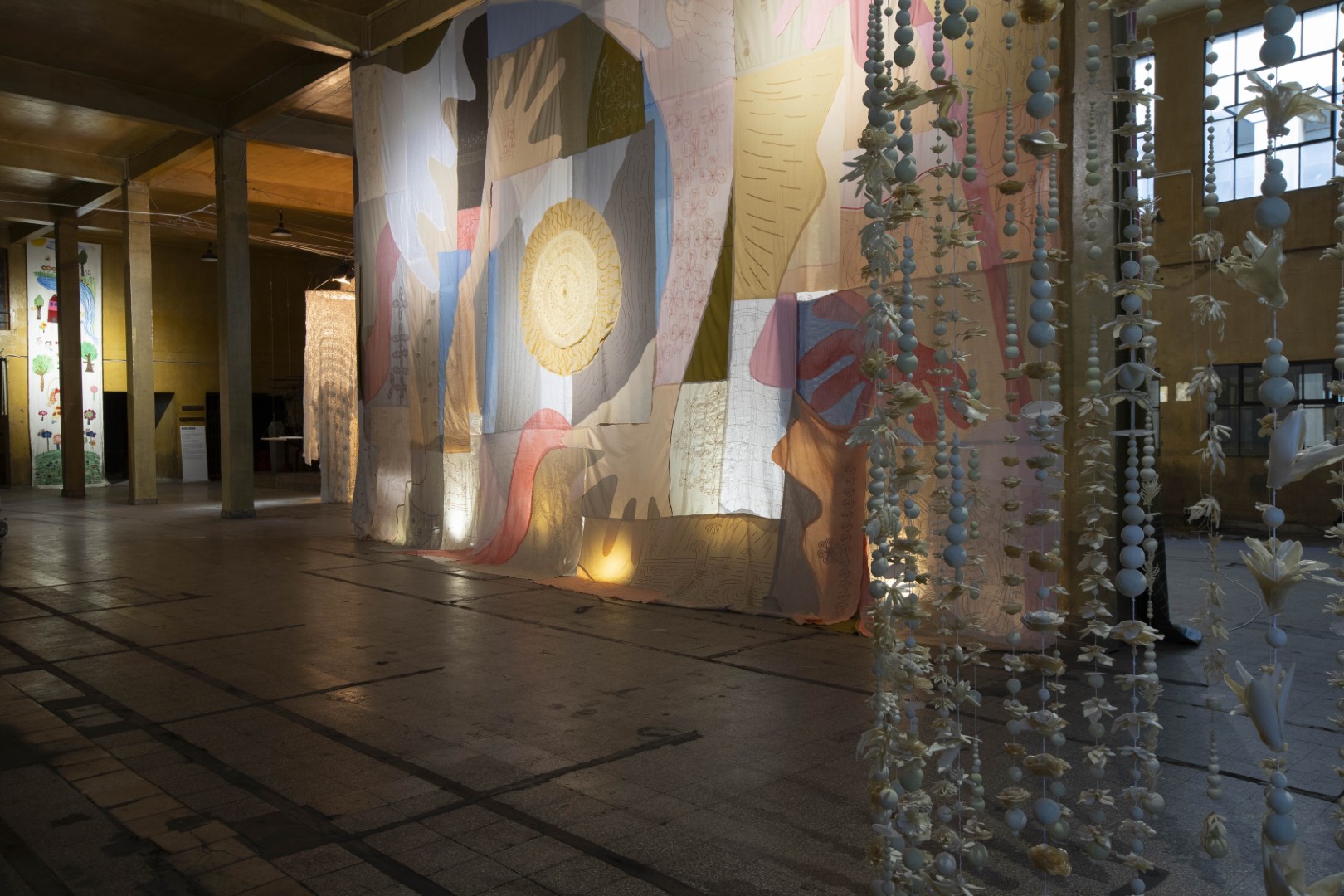
Amer sees the piece as both personal and collective, a visual diary of his ongoing relationship with the city and its artisans. It captures not only Beirut’s artistic resilience but also the emotional landscape of its people: their capacity to rebuild, repurpose, and re-imagine beauty from what has been left behind.
In a city that has endured cycles of destruction and renewal, Textured Love stands as a metaphor for continuity. It honours the threads that connect generations and communities, reminding us that craft, like memory, is never static, it evolves, it endures, and it binds us together.
From Snow to Debris: Christian Pellizzari’s Ode to Resilience
Part of We Design Beirut 2025 at Immeuble de l’Union (Sanayeh)
When We Design Beirut invited Italian creative Christian Pellizzari to take part in its 2025 edition, the designer, known for his poetic blend of fashion, light, and sculptural form, found his inspiration in Beirut’s own story of endurance. Installed within Immeuble de l’Union, the restored 1950s modernist landmark re-imagined by Karim Nader, Pellizzari’s work joined Union – A Journey of Light by Karim Nader and Atelier 33, and Rising with Purpose, a showcase of young Lebanese design voices.
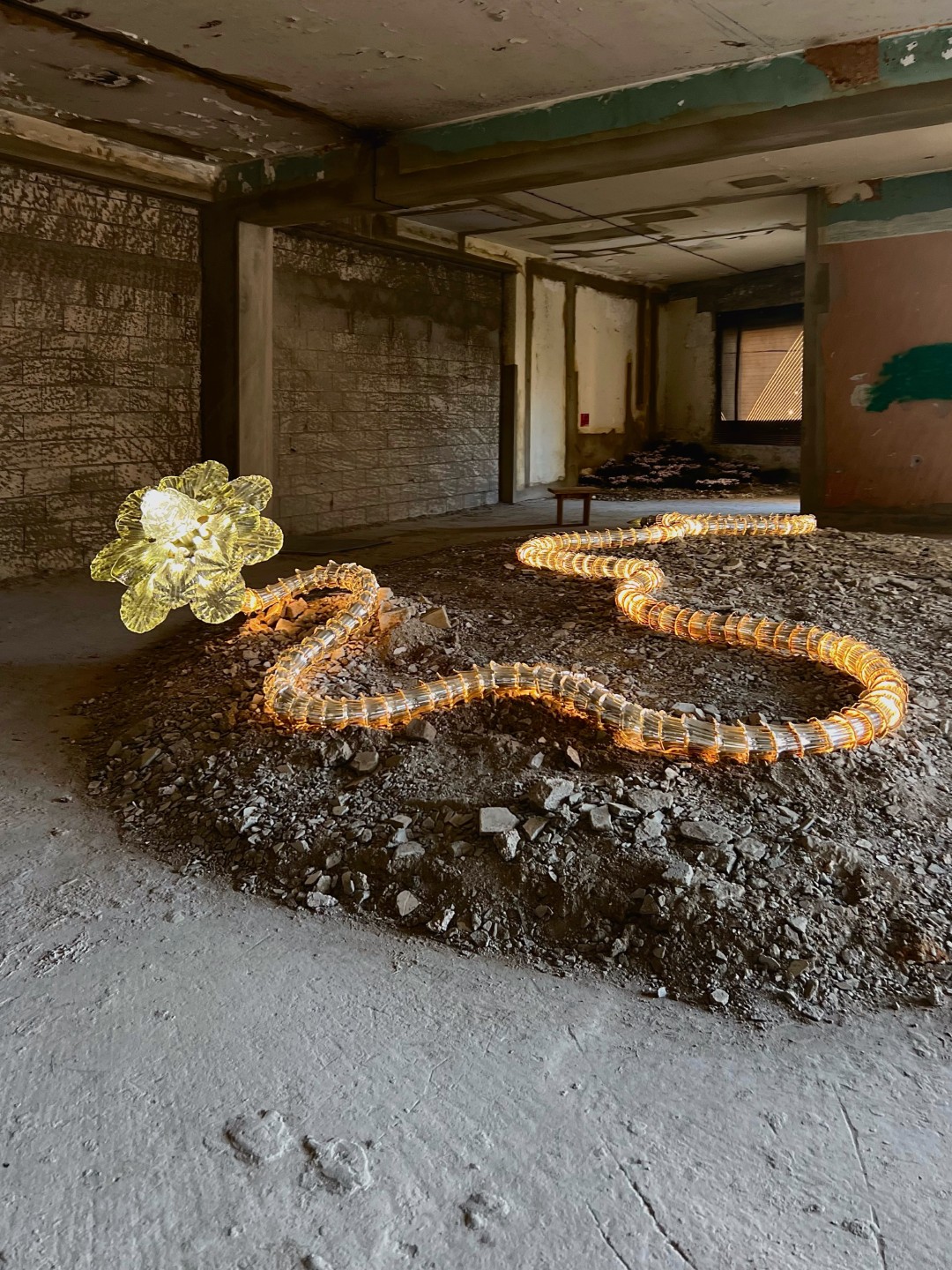
“When We Design Beirut asked me to be guest artist, I needed a motivation,” Pellizzari says. “I found it in the idea of the exhibit, from destruction can grow something beautiful, resilience. My art piece symbolises that strength and beauty can rise over destruction.”
The second act of an itinerant project that began in St. Moritz, the installation continues Pellizzari’s exploration of nature’s evolution and resilience.
“Last year was the snow around Lake St. Moritz; this year is destruction and debris in Beirut,” he explains. “It’s part of my project about the evolution of nature, its resilience, working with light and Murano glass.”
In St. Moritz, Pellizzari’s work reflected the endurance of nature beneath layers of snow and ice. In Beirut, the context shifted from frozen silence to urban rebirth: light emerging through fragments, beauty reclaiming its form amid ruin. His use of Murano glass, a fragile yet luminous medium, became a metaphor for regeneration, catching the city’s light as it filtered through the debris.
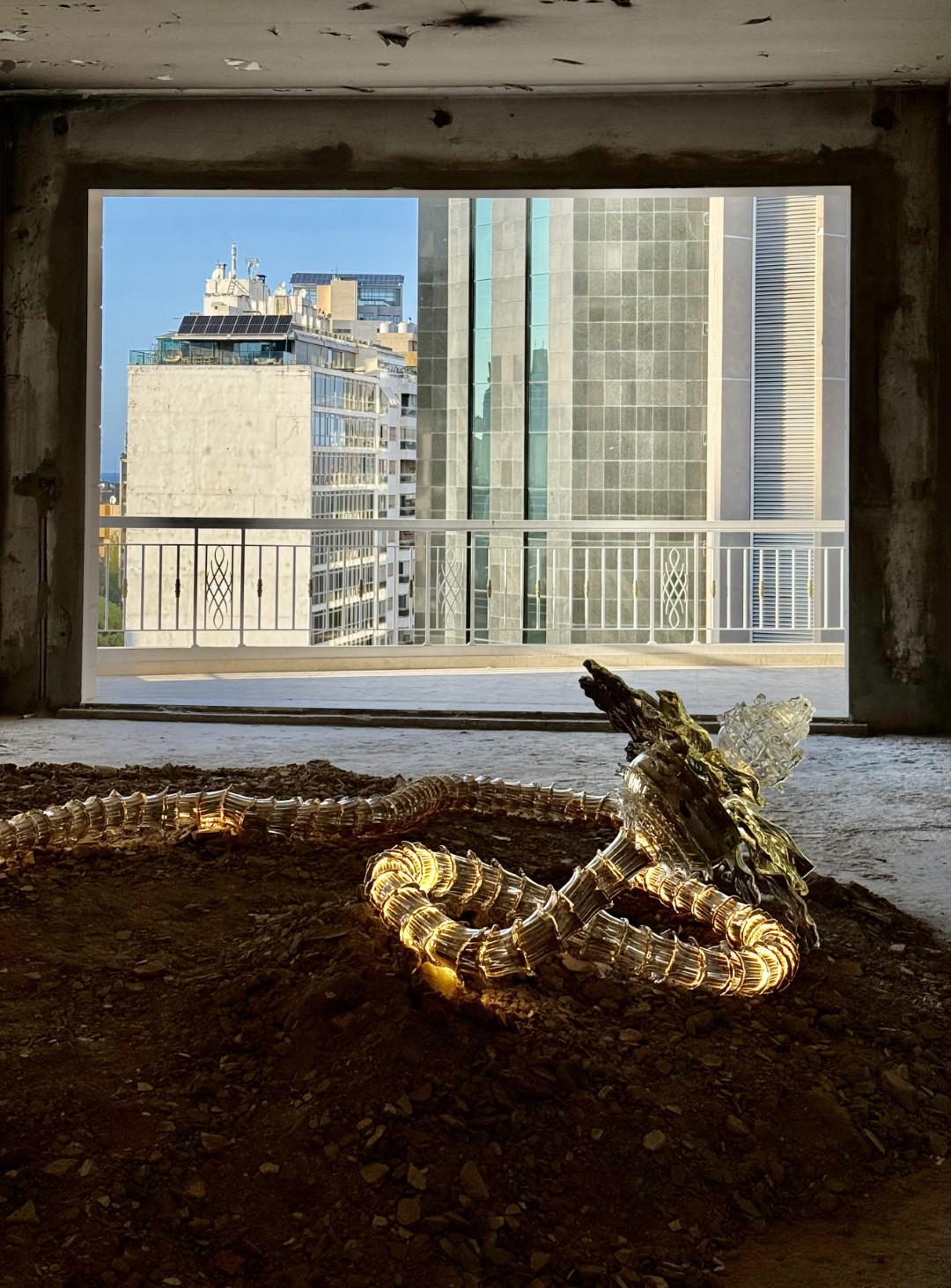
“The work is about transformation,” he adds. “How nature, and creativity, can evolve under impossible conditions. It’s about hope, strength, and the poetry that exists in survival.”
Pellizzari’s presence at Immeuble de l’Union added an international dimension to We Design Beirut’s mission of bridging heritage, architecture, and contemporary design. The building, a restored modernist icon, mirrors the themes within his installation: continuity, adaptation, and the enduring beauty of what rises after collapse.
By situating his work in this emblem of architectural renewal, Pellizzari’s installation became both homage and dialogue, a conversation between Beirut’s past and its future, between fragility and resilience, between destruction and creation.
Birdbath, Nada Debs at the Roman Baths
Designer Nada Debs reinterpreted the Roman Baths of downtown Beirut through a poetic dialogue between heritage, material, and ritual. Her installation, called Birdbath, was part of Roman Baths: Of Water and Stone, curated by Nour Osseiran and produced by Stones by Rania Malli with the support of Solidere, invited visitors to reflect on the ancient connections between cleansing, gathering, and renewal.
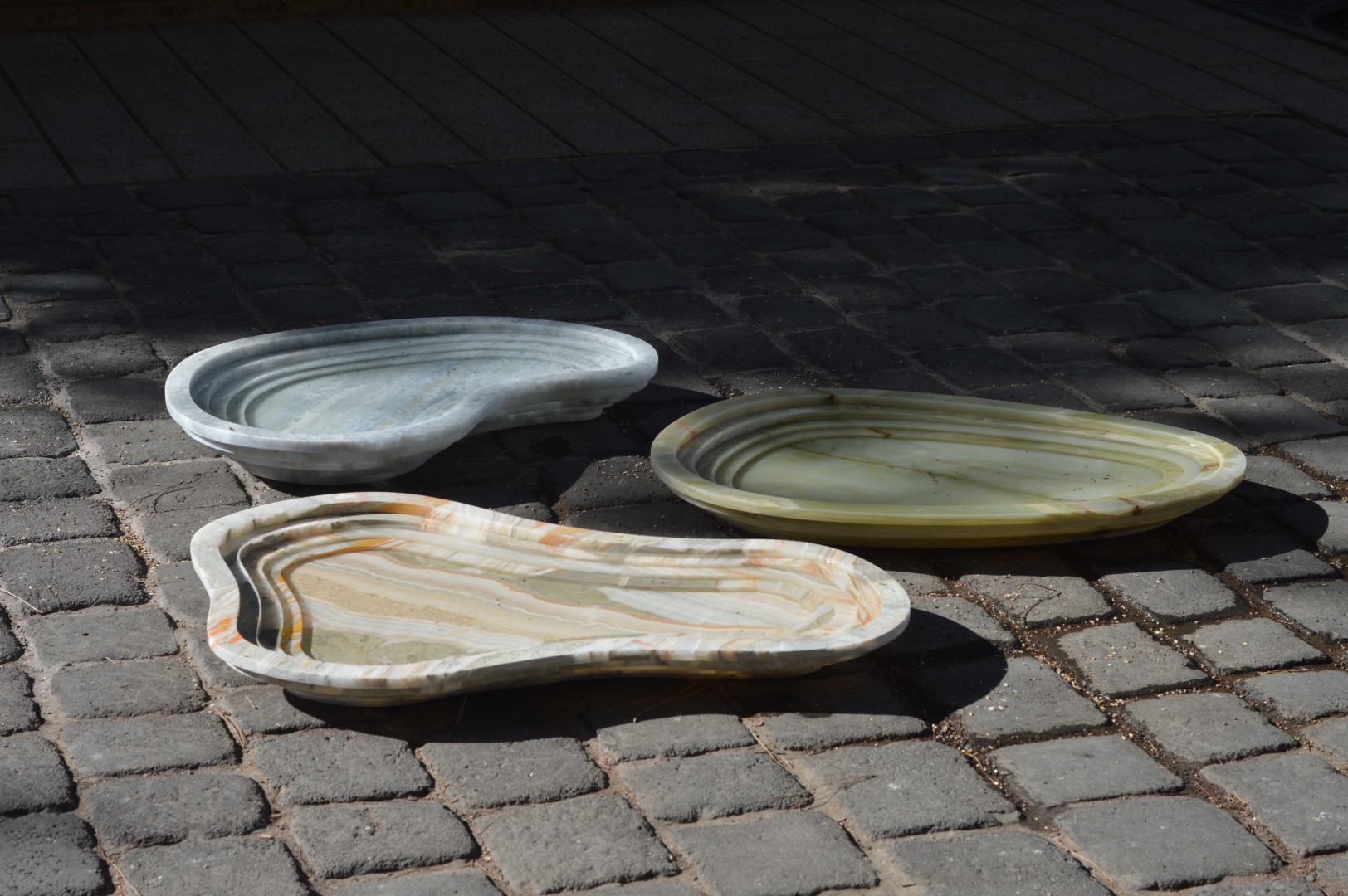
Debs’ work explored how stone and water, once essential to communal ritual, can today become mediums of healing and reconnection. “I wanted to re-imagine the Baths not as ruins, but as a living memory,” she says. “It’s about honouring what once was, while creating space for presence and flow.”
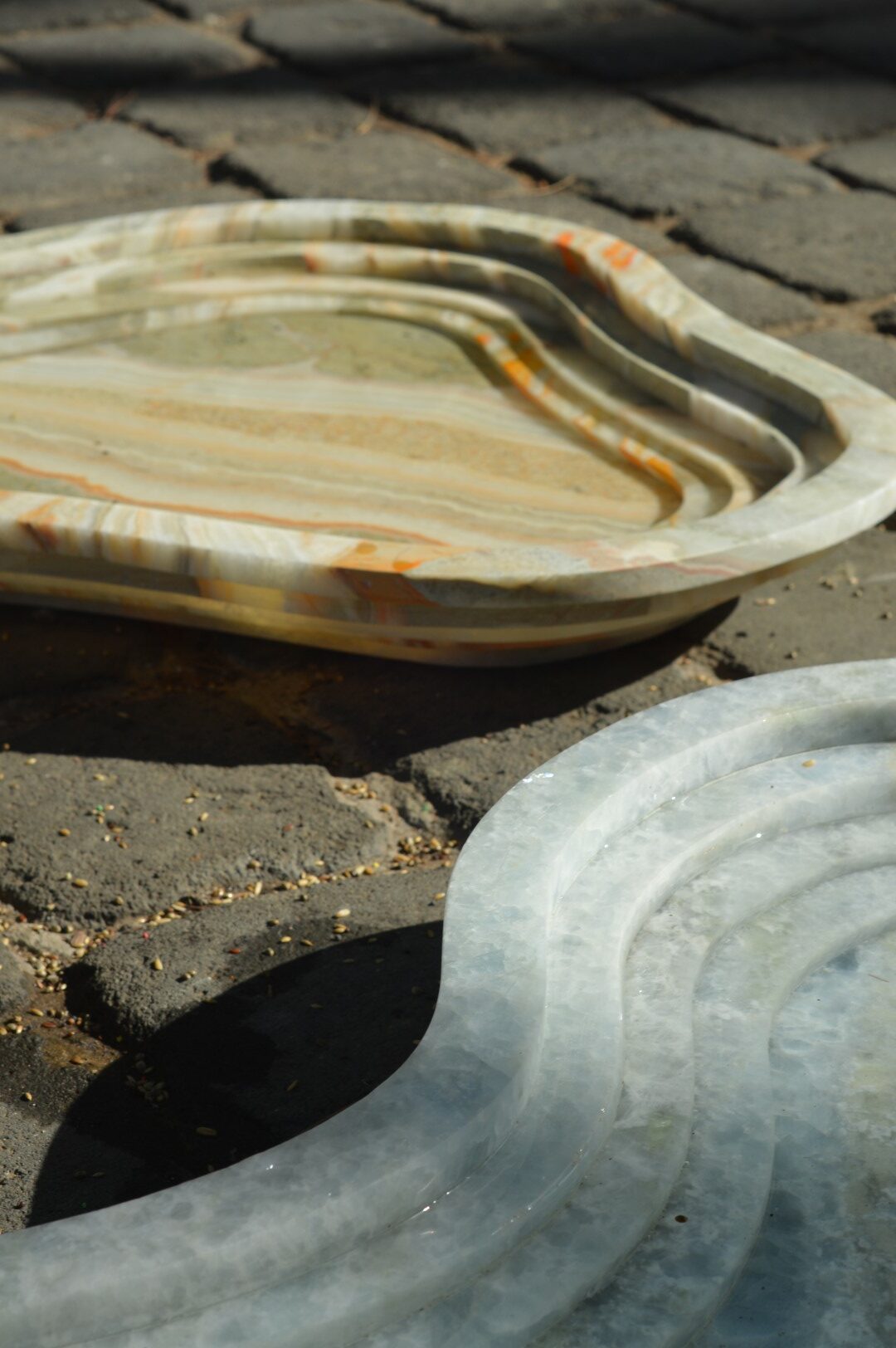
Her piece translated these themes through contemporary marble design, minimal yet emotive compositions that echo the site’s architectural rhythm. Polished surfaces met carved voids, allowing light and shadow to mimic water’s movement across stone. The result was both tactile and spiritual, grounding ancient practices in modern material expression.
By bridging Beirut’s layered history with her signature approach to craftsmanship and geometry, Debs transforms the Roman Baths into a meditation on continuity, how design can cleanse, connect, and restore.
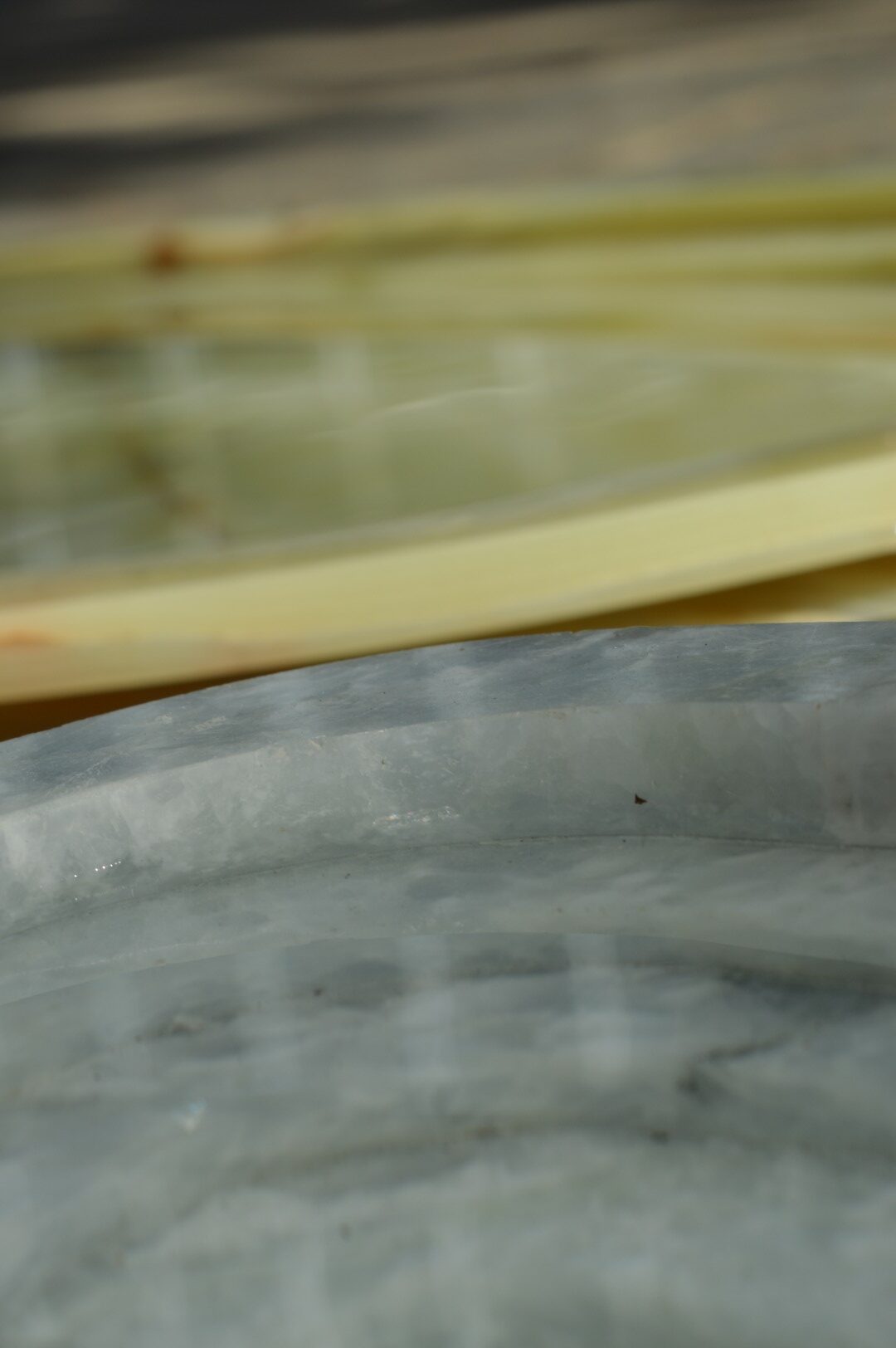
“This site once brought people together through ritual,” she notes. “I wanted the installation to do the same, to remind us that even in stillness, there is renewal.”
Jawharunā جوهرنا: A sensorial installation
Vanina’s co-founders Tatiana Fayad and Joanne Hayek presented Jawharunā جوهرنا, a sensorial installation that translated the soul of Lebanon into scent, texture, and form. Suspended in space like a delicate memory, the work invited visitors into an olfactory journey through the essence of Beirut, where every fragrance told a story of belonging.
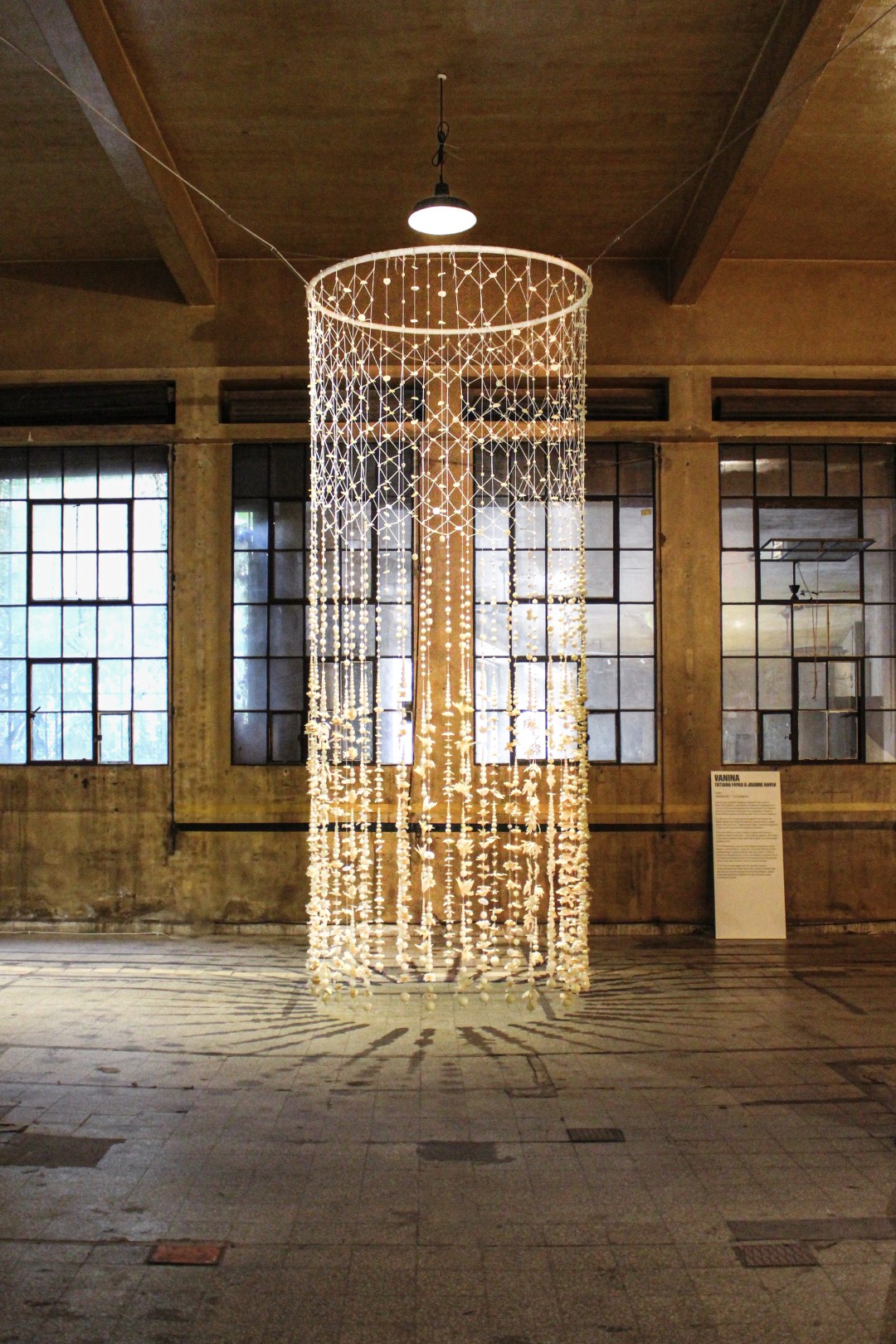
Composed entirely of biodegradable materials crafted by hand, Jawharunā celebrated Lebanon’s multiplicity, a land where contrasts coexist and differences weave into a shared identity. Each bead, sculpted from natural essences such as jasmine, orange blossom, zaatar, cedar, olive, and rose, released its fragrance when brushed against, transforming movement into memory.
The installation encouraged slowness and intimacy, a sensory dialogue between body and space. As visitors passed through its soft threads, scent became a bridge to recollection, grounding them in a moment that felt both fleeting and eternal.
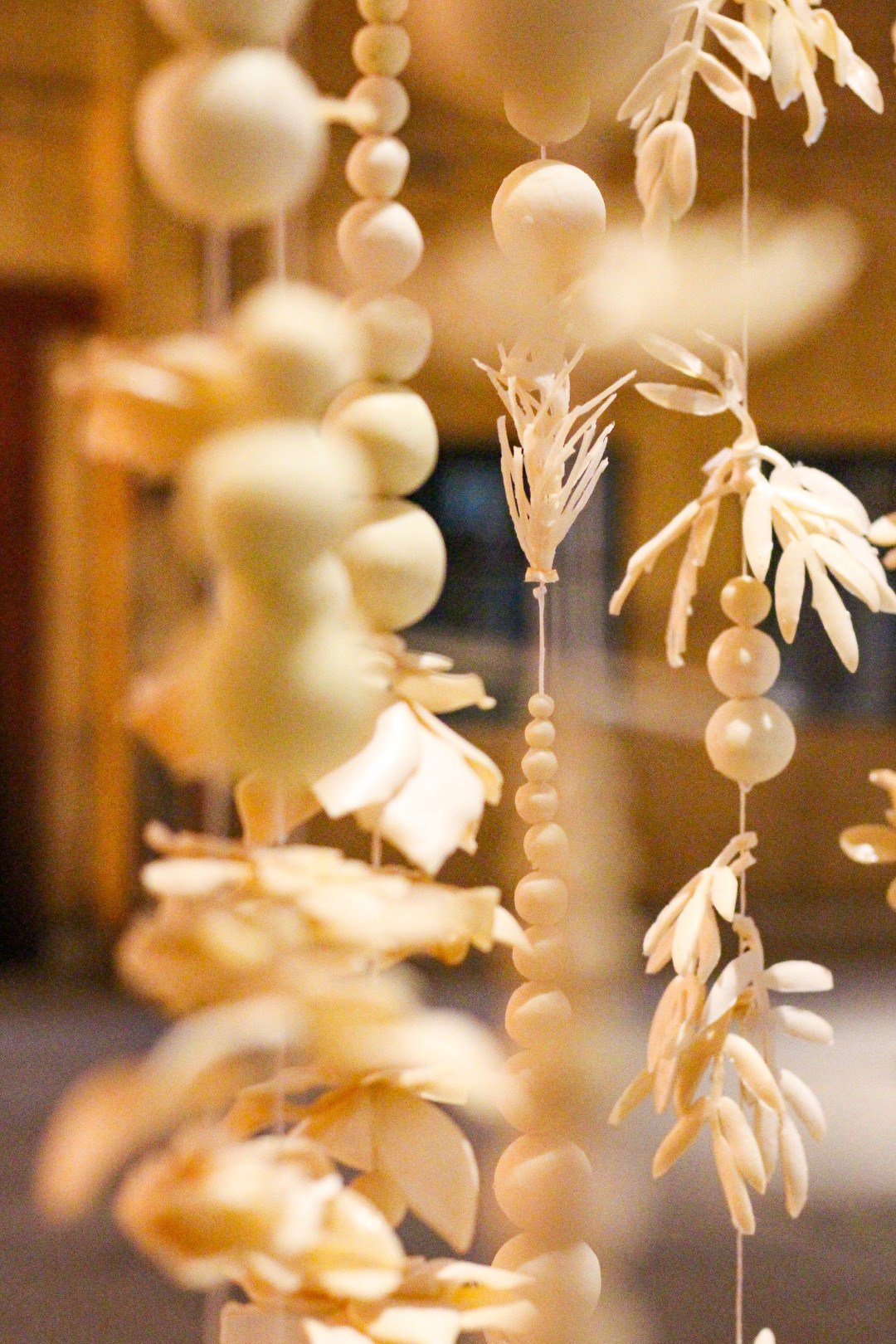
Made from local botanicals and organic binders like glycerin, olive oil, and agar-agar, and suspended on hemp threads through intricate macramé, the piece embodied Vanina’s commitment to craftsmanship, sustainability, and poetic design.
Through Jawharunā, Vanina distilled Lebanon’s essence, ephemeral yet enduring, invisible yet unforgettable.
Tarek Moukaddem x Interform: A Table of Fragments and Memory
At We Design Beirut 2025, designer Tarek Moukaddem and Interform transformed sustainability into a poetic act of craftsmanship. Their collaborative dining table, created entirely from Interform’s leftover parquet pieces, turned what was once waste into a story of renewal, artistry, and cultural continuity.
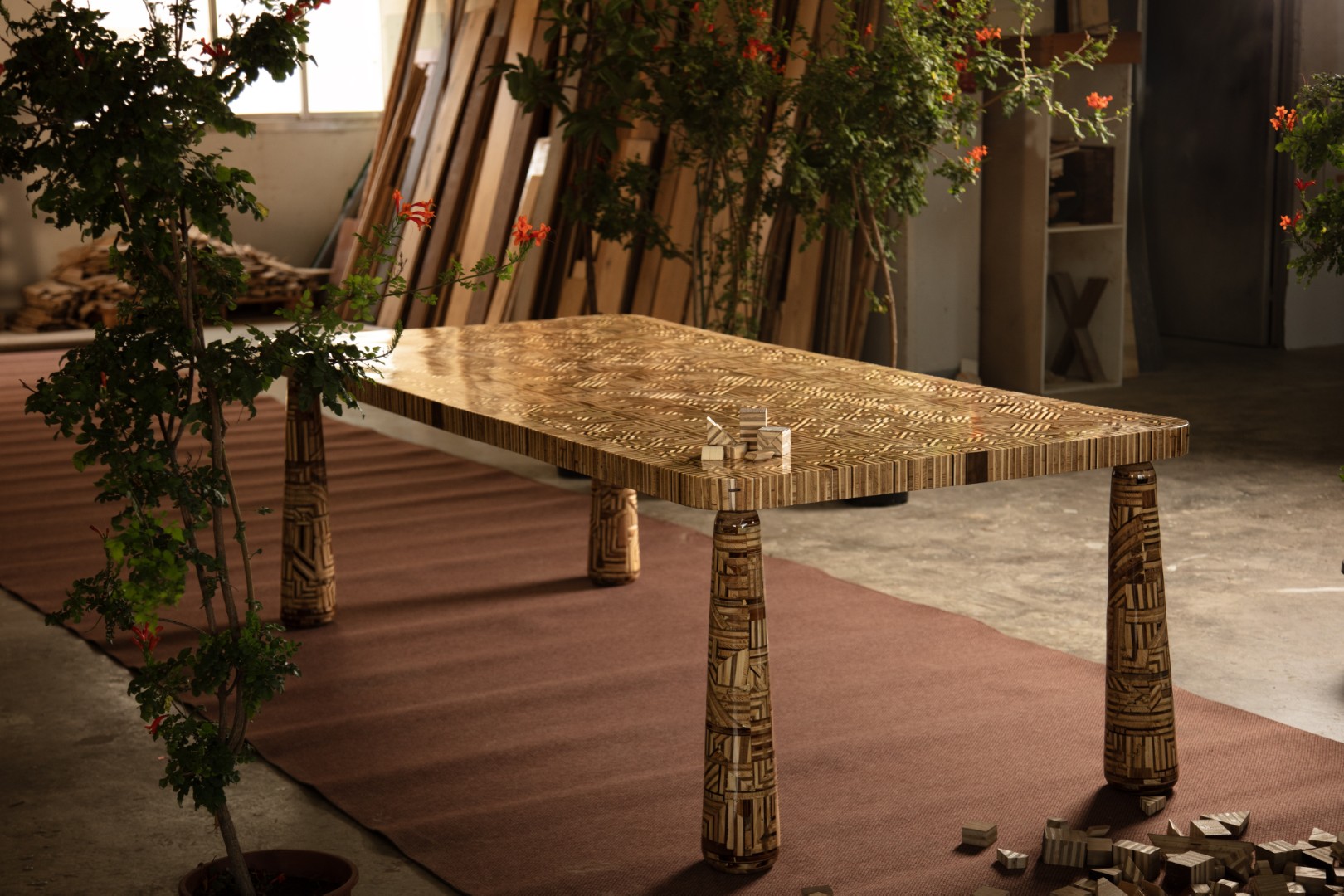
More than 10,000 fragments of wood were meticulously reassembled to form a single sculptural surface, a mosaic of textures, tones, and histories. Each piece fits into another with quiet precision, creating a visual rhythm that recalls the intricate geometry of traditional Levantine marquetry. Yet, the design’s language is unmistakably modern, stripping away ornamentation to reveal the material’s raw, organic beauty.
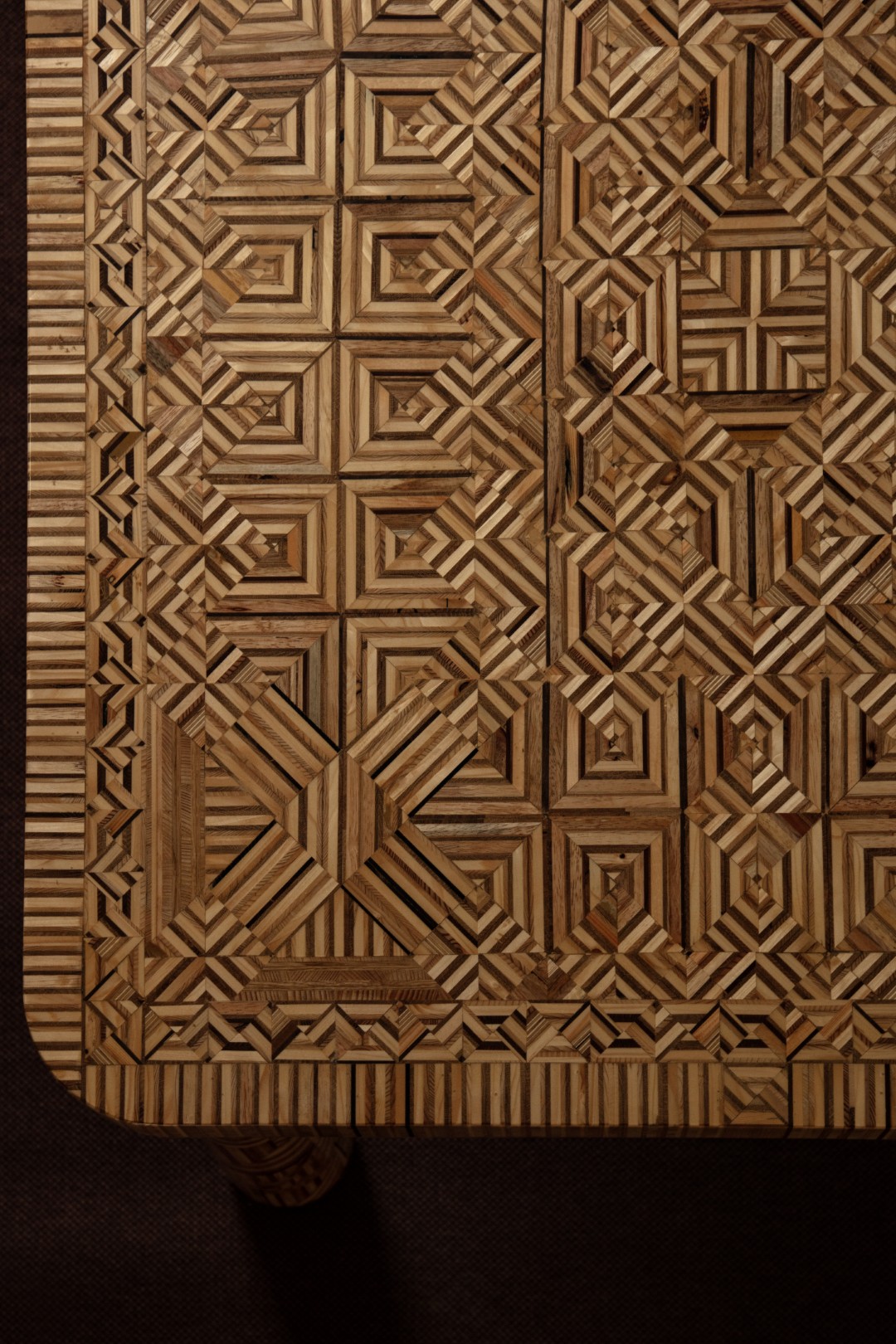
In this work, Moukaddem re-imagined craftsmanship as both preservation and reinvention. The table stands as a metaphor for Beirut itself, a city that endlessly rebuilds from its own fragments, finding harmony in imperfection.
What emerged is more than a piece of furniture; it is a tactile narrative of memory, resilience, and respect for resources. Every fragment finds its place, proving that in design, as in life, nothing is ever truly wasted.
For more stories of art and culture from across the region, visit our dedicated pages and follow us on Instagram.
